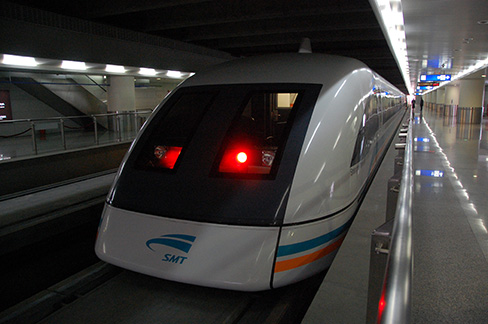| << Chapter < Page | Chapter >> Page > |

Just as with the growth of a bamboo plant, there are many situations that involve constant change over time. Consider, for example, the first commercial maglev train in the world, the Shanghai MagLev Train ( [link] ). It carries passengers comfortably for a 30-kilometer trip from the airport to the subway station in only eight minutes http://www.chinahighlights.com/shanghai/transportation/maglev-train.htm .
Suppose a maglev train travels a long distance, and maintains a constant speed of 83 meters per second for a period of time once it is 250 meters from the station. How can we analyze the train’s distance from the station as a function of time? In this section, we will investigate a kind of function that is useful for this purpose, and use it to investigate real-world situations such as the train’s distance from the station at a given point in time.
The function describing the train’s motion is a linear function , which is defined as a function with a constant rate of change. This is a polynomial of degree 1. There are several ways to represent a linear function, including word form, function notation, tabular form, and graphical form. We will describe the train’s motion as a function using each method.
Let’s begin by describing the linear function in words. For the train problem we just considered, the following word sentence may be used to describe the function relationship.
The speed is the rate of change. Recall that a rate of change is a measure of how quickly the dependent variable changes with respect to the independent variable. The rate of change for this example is constant, which means that it is the same for each input value. As the time (input) increases by 1 second, the corresponding distance (output) increases by 83 meters. The train began moving at this constant speed at a distance of 250 meters from the station.
Another approach to representing linear functions is by using function notation. One example of function notation is an equation written in the slope-intercept form of a line, where is the input value, is the rate of change, and is the initial value of the dependent variable.
In the example of the train, we might use the notation where the total distance is a function of the time The rate, is 83 meters per second. The initial value of the dependent variable is the original distance from the station, 250 meters. We can write a generalized equation to represent the motion of the train.

Notification Switch
Would you like to follow the 'College algebra' conversation and receive update notifications?